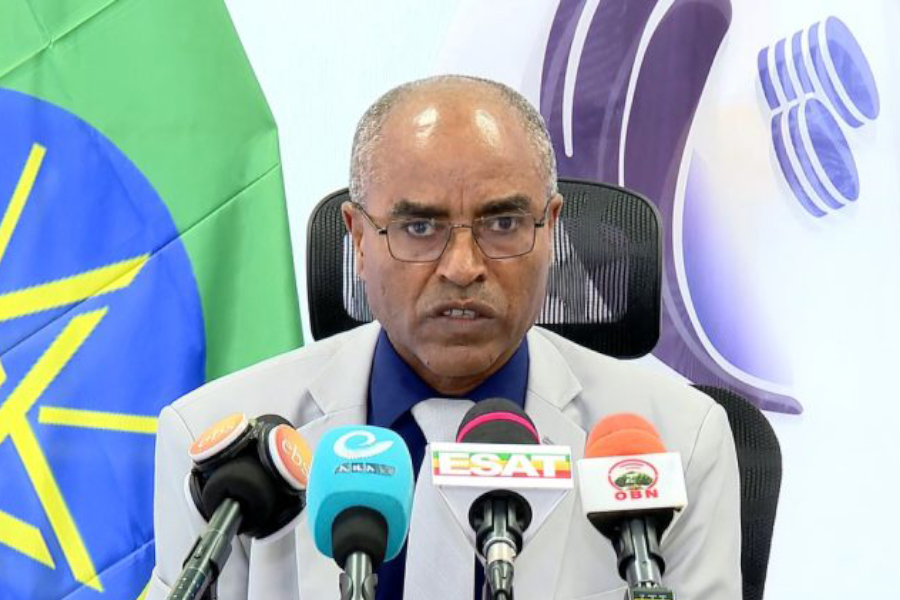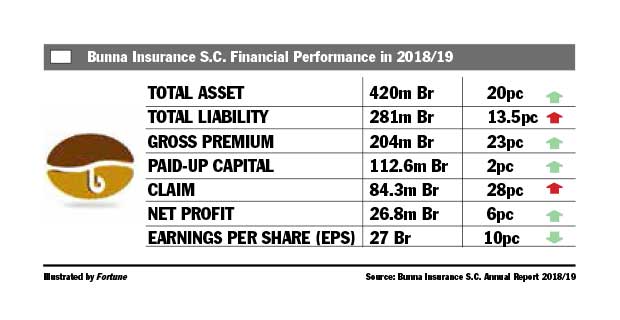
Commentaries | Oct 02,2021
Aug 22 , 2020
By GELILA SAMUEL ( FORTUNE STAFF WRITER
)
A new directive issued by the National Bank of Ethiopia (NBE) has activated the microinsurance industry, which provides coverage to the low-income segment of the population.
Coming into effect August 17, 2020, the directive is applicable to insurance companies, microfinance institutions and newly formed microinsurance companies to give life and general insurance coverage to low-income communities.
Though it has been practised by three insurance companies for years, microinsurance did not have a legal framework until 2019, when the insurance law was amended. With the proclamation, the central bank added articles on microinsurance, giving legal grounds for the formulation of this directive.
Life microinsurance provides term insurance for the insured policyholder or a member of the family, as well as coverage in case of accidental death or disability including credit life insurance and medical expenses. Term insurance provides coverage for a specified period of time, while credit life insurance is designed to pay off a borrower's outstanding debts if the borrower dies.
Under general microinsurance, loss or damage to property like crops and livestock, coverage for loans, and weather index insurance are included. Other covered products will be issued following approval from the central bank.
New entrants in the microinsurance industry, as well as existing microfinance institutions, are expected to present paid-up capital of seven million Birr for life and three million Birr for general microinsurance products. If both are to provide life and general insurance products, 10 million Br is required. The microinsurance institution will follow similar procedures as an insurance company to obtain a license from the regulatory bank to start operations.
Currently, there are 17 insurance companies in the country, with a total paid-up capital of 8.8 billion Br. In the case where these insurance companies want to add this policy to their insurance product, they have to create a separate unit that runs and manages this operation only.
A pilot project was launched in three ways with the partnership of the World Bank and the International Food Policy Research Institute, according to Solomon Zegeye, manager of the microinsurance business at Nyala Insurance, which started its microinsurance segment close to 13 years ago.
The project included protection for people under the absolute poverty line or those identified by the Productive Safety Net Programme for whom direct food and cash transfers are made. The second element was promotion applicable to smallholder farmers practising both crop cultivation and livestock rearing on a sedentary basis in agro-pastoral and highland livelihood systems. And finally, loan portfolio protection for commercial farm developers engaged on a medium or large-scale project financed either by commercial or development banks.
Most of the pilot programmes ceased due to financial problems, according to Solomon, who added that the targeted customers were not able to pay the premiums.
"The products were designed by foreign consultants," he said. "The lack of skill at home to process climate data and gauge pricing has hindered the scaling up of the product locally."
Reinsurance also proved to be another challenge, according to Solomon.
"As agricultural insurance involves severe losses, reinsurers aren't willing to provide cover for the direct insurer," he said.
Currently, microfinance institutions provide credit life insurance without the approval of the central bank. But in order to join other endeavours among microinsurance products, the institutions have to create a separate microfinance business unit. The unit should have an exclusive paid-up capital and a separate account of all income and expenditures, assets and liabilities from the microfinance business.
In the second quarter of the just ended fiscal year, the number of microfinance institutions reached 38, collectively operating with mobilised savings deposits of 41.6 billion Br.
"We're giving the service of credit life insurance to our clients with a premium of one percent of their loan," said Teshome Legesse, CEO of Oromia Credit & Saving Company. "It's not lucrative for us, but it benefits the clients."
The difficulty is finding the middle ground, according to Teshome, adding that the scheme benefits the institutions but also supports the goal of the scheme.
The maximum sum of the insurance provided by the microinsurance providers cannot surpass their paid-up capital by one percent. Additionally, the sum insured for credit life microinsurance has to increase along with the outstanding loan amount.
The risks are very high, as the premiums do not amount to the losses covered, according to Wasihun Mekonnen, a legal attorney that has worked for multiple insurance companies.
It is not favourable to a business mindset, but the main aim of microinsurance is addressing the community, especially in developing countries, according to the expert.
"In Kenya, for example, this policy is practised in partnership with development agencies that pitch in the premium as a support for a programme," he said. "This approach is more like a subsidised way of exercising the policy."
The expert doubts the future prevalence of the microinsurance market and believes the engagement of the few insurance companies is a testament to this.
PUBLISHED ON
Aug 22,2020 [ VOL
21 , NO
1060]

Commentaries | Oct 02,2021

Radar | Feb 10,2024

Fortune News | Sep 29,2024

Radar | Jul 15,2023

Radar | Sep 28,2019

Fortune News | Dec 07,2019

Radar | Apr 30,2024

Commentaries | Feb 27,2021

Radar | Dec 01,2024

Radar | Jun 08,2019

Dec 22 , 2024 . By TIZITA SHEWAFERAW
Charged with transforming colossal state-owned enterprises into modern and competitiv...

Aug 18 , 2024 . By AKSAH ITALO
Although predictable Yonas Zerihun's job in the ride-hailing service is not immune to...

Jul 28 , 2024 . By TIZITA SHEWAFERAW
Unhabitual, perhaps too many, Samuel Gebreyohannes, 38, used to occasionally enjoy a couple of beers at breakfast. However, he recently swit...

Jul 13 , 2024 . By AKSAH ITALO
Investors who rely on tractors, trucks, and field vehicles for commuting, transporting commodities, and f...

Jul 5 , 2025
Six years ago, Ethiopia was the darling of international liberal commentators. A year...

Jun 28 , 2025
Meseret Damtie, the assertive auditor general, has never been shy about naming names...

Jun 21 , 2025
A well-worn adage says, “Budget is not destiny, but it is direction.” Examining t...

Jun 14 , 2025
Yet again, the Horn of Africa is bracing for trouble. A region already frayed by wars...